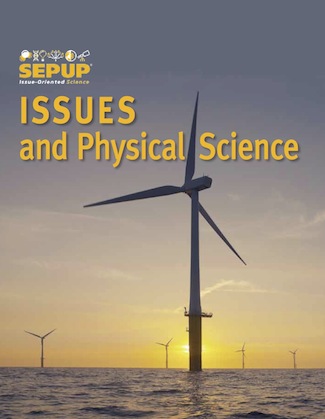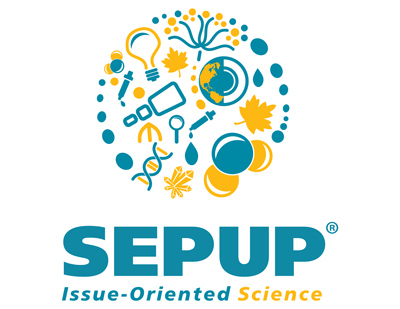Issues and Physical Science, Second Edition (IAPS)

Issues and Physical Science, Second Edition (IAPS) is a middle level physical science program that examines issues in a societal context. The program treats issues in a way that fosters and promotes the ability of young adolescents to think abstractly, and builds upon their need for peer interaction and support. It can serve as the physical science component of an integrated, multi-year science program, or as a stand-alone, full year physical science program. The course consists of 99 activities, each requiring one to three class periods.
This course can accompany Issues and Life Sciences, and Issues and Earth Science to form a complete middle level science series.
Sample Activity
Summary
All students need to develop an understanding of science and technology to make informed personal and community decisions. Using Issues and Physical Science, Second Edition (IAPS), students learn how to gather and interpret scientific evidence about issues of interest to them and their community. As a result, they begin to appreciate the power and also some of the limitations of science. They also begin to recognize that science is much more than a set of answers to be learned, but rather, a way of asking questions.
Issues and Physical Science is a middle level physical science program that examines issues in a societal context. The program treats issues in a way that fosters and promotes the ability of young adolescents to think abstractly, and builds upon their need for peer interaction and support. It can serve as the physical science component of an integrated, multi-year science program, or as a stand-alone, full year physical science program. The course consists of 99 activities, each requiring one to three class periods. This course can accompany Issues and Life Sciences, and Issues and Earth Science to form a complete middle level science series.
Description of Units:
A. Studying Materials Scientifically
Students investigate the properties of different materials. They identify unknown substances and to separate mixtures using a variety of chemical and physical properties, including density. As they learn about hazardous materials and the safety procedures used in handling them, students create similar safety guidelines for working with chemicals in the science classroom. In the culminating activity, students apply their understanding to evaluate the safety, effectiveness, storage, and handling of cleaning products.
B. The Chemistry of Materials
Students explore the life cycles of a variety of common materials from the acquisition of raw materials through to the end of the product’s useful life. After learning about the basic building blocks of matter, elements, and the periodic table, students model the structures of several common compounds. Moving from the atomic level to the material level, students investigate what conservation of matter means in light of the product life cycle and how this can affect manufacturing decisions. In the culminating set of investigations, students draw upon their understanding of the atomic nature and conservation of matter to determine a way to improve the life cycle of a computer circuit board.
C. Water
Students study the complex issues that surround a very basic necessity-drinking water as they investigate water quality issues in the fictional community of Willow Grove. The unit begins with students investigating drinking water quality and the issues of biological and chemical contamination. John Snow’s historic epidemiological work on the cause of cholera and more recent problems with microorganisms such as E.coli and Giardia provide examples of biological contamination. Industry and human use of chemicals and fossil fuels provide examples of chemical contamination. In the culminating activities of the unit, students apply what they have learned to make decisions about precipitation and neutralization as methods for treating industrial wastewater containing acid and heavy metals.
D. Energy
People use energy! How we use it will determine the quality of life on earth for future generations. To use energy in an informed way—in a way that maintains or improves environmental quality—we must first understand the nature and implications of our personal use of energy. In this part of Issues and Physical Science, students explore energy transfer and conservation in the context of household energy usage. The activities explore key energy concepts, including the variety of types of energy, energy transfers within and between systems, the energy chains involved when energy is transformed from one type to a more desired type, and the methods used to quantify energy and determine the efficiency of energy transfers. Through their experiences in this part of the course, students become aware that energy is a quantifiable commodity that can be obtained, stored, and used in various ways. They learn that as energy is transformed, some becomes unavailable. The focus on energy efficiency and the waste involved in energy transfers leads to the consideration of renewable and non-renewable energy sources and the trade-offs involved in each. This helps students develop their understanding of the environmental costs of all energy use and provides them with an approach to making decisions about energy. They apply this understanding in the culminating activity of the unit, in which they design an energy-efficient home.
E. Force and Motion
Students investigate concepts related to force and motion in the context of vehicle safety issues. The unit begins with investigations of speed, motion graphs, and the impact of mass and speed on vehicle accidents. Students investigate force, acceleration, mass and friction and are introduced to Newton’s laws of motion. They apply these concepts to vehicle braking and stopping distances and investigate the stability of vehicles with different centers of mass. The unit ends with an investigation of types of car accidents and students’ recommendations for reducing the risks of vehicle collisions.
F. Waves
In this unit, studenst learn about several kinds of waves and investigate the transmission of sound and light. They also investigate the situations in which some waves may be harmful to their health. Some of the questions addressed in this unit include: How is sound energy transmitted? Can light go through an object? What is ultraviolet light? How are sound and light waves similar?

